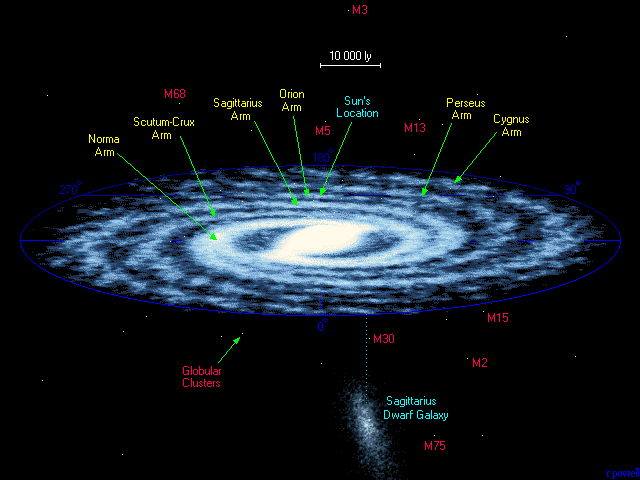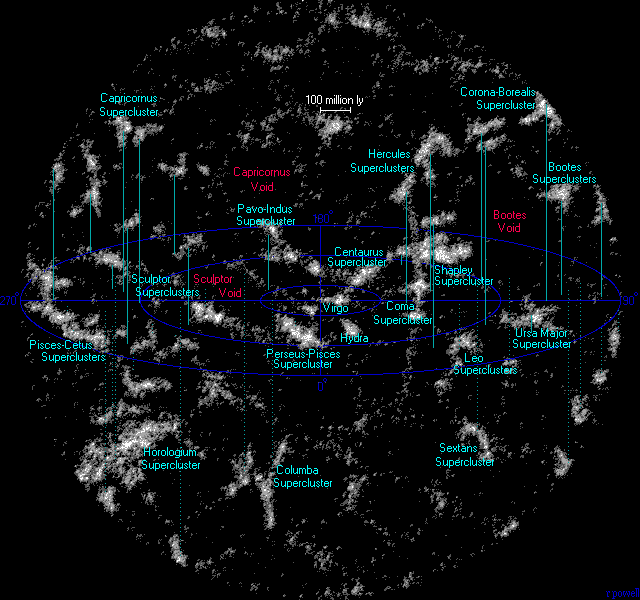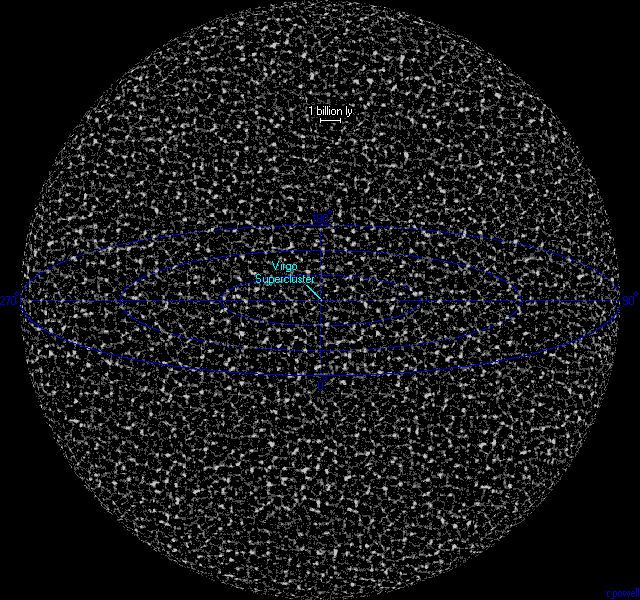Tom, you make me laugh. Neither space nor time, nor “space-time” is a fabric for the simple reason that space and time are not things in and of themselves. They are merely phenomenal effects of a thing in the same way that a shadow is a deprivation of light. They are what something (aether) does, not what something is.
Secondly, have you noticed that so-called scientists keep making the age of the universe older every time they encounter a problem with their theories? Sort of like how they invent a new particle every time one of their darling equations doesn’t balance. It’s a little too convenient. It seems to me that every time we learn that life is a little more complex and a little less likely to propagate by chance than we previously thought, the pop-physicist/bean-counter comes along and says, “That’s okay, because we just added another billion.” I suppose they believe that if they say a big enough number they will sufficiently boggle our minds into believing in anything. But the fact of the matter is, all their big numbers are unsupported by actual evidence, only by extrapolations based on the fallacious supposition of uniformitarianism.
In physics, spacetime is any
mathematical model which fuses the three dimensions of space and the one dimension of time into a single four-dimensional
manifold. Spacetime diagrams can be
used to visualize relativistic effects, such as why different observers
perceive differently where and when events occur.
Science changes constantly because learning is not stagnated and final. As new things are discovered/figured out, science changes.
Since mankind knows very little about things (still learning) nomenclature, laws and limits are constantly changing.
Much of what we know, can't be physically examined, manipulated or measure.
Part of the quest for understanding involves theorizing.
A scientific theory is an explanation of an aspect of the natural world that can be repeatedly tested and verified in accordance with the scientific method, using accepted protocols of observation, measurement, and evaluation of results.
In the scientific method, there is a clear distinction between facts, which can be observed and/or measured, and theories, which are scientists' explanations and interpretations of the facts. An important part of scientific theory includes statements that have observational consequences.
The scientific method involves careful observation, applying rigorous skepticism about what is observed, given that cognitive assumptions can distort how one interprets the observation. A method of research in which a problem is identified, relevant data is gathered, a hypothesis is formulated from this data, and the hypothesis is empirically tested.
Changes in scientific fact occur as we discover new things because science constantly reevaluates itself against new data and theories. Its an ongoing process which will never be complete until everything is known about everything, everywhere in all possible time frames. So yes, they do change their words and limits.
According to ancient and medieval science, aether, also spelled æther, aither, or ether and also called quintessence, is the material that fills the region of the universe above the terrestrial sphere.
In physics, aether theories propose the existence of a medium, a space-filling substance or field, thought to be necessary as a transmission medium for the propagation of electromagnetic or gravitational forces.
Luminiferous aether or ether ("luminiferous", meaning "light-bearing") was the postulated medium for the propagation of light. It was invoked to explain the ability of the apparently wave-based light to propagate through empty space (a vacuum), something that waves should not be able to do.
The theory of relativity didn't disprove aether, but it provided a simpler explanation that didn't require an absolute omnipresent medium for the motion of light.
There is a theory which allows for a type of aether. Its called Vacuum Energy or Zero Point Energy.
Vacuum energy is an underlying background energy that exists in space throughout the entire Universe. Its behavior is codified in Heisenberg's energy–time uncertainty principle.
Zero-point energy is the lowest possible energy that a quantum mechanical system may have. Unlike in classical mechanics, quantum systems constantly fluctuate in their lowest energy state as described by the Heisenberg uncertainty principle.
A personal idea of mine which I rather enjoy musing over:
In the aether of space voids vacuum energy gathers into a point and coalesces to form particles of matter/antimatter. Matter and antimatter which come into contact with each other convert back to energy. However, not all matter or antimatter actually meet. This results in particles of matter and particles of antimatter being created where nothing was before.
It could account for how matter became dominate in the early Universe.
We (mankind) knows matter is composed of energy. Its the basis for nuclear reactions. Slam certain elements together with enough force and that collision yields extreme energy. Think atomic bomb. Stars do it naturally.
If you flip it around, energy should form matter if it condenses or gathers at a point. We split the atom to get energy, condensing energy should result in matter. It can't be done but I find it fun to think about.
If there is any validity to this idea, it would explain aether's role in the Universe. A low level field of energy which permeates the entire Universe.
Basically, matter is condensed aether.
Edited by
Tom4Uhere
on Wed 02/24/21 01:58 PM














